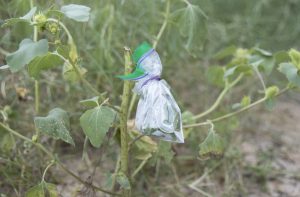- Slug: BC-CNS Heath Deaths and Safety, 455 words.
- 5 photos and captions below.
By Sophie Oppfelt
Cronkite News
PHOENIX – Arizona’s greatest attractions include jaw-dropping landscapes and warm desert sun. But if people aren’t prepared for the state’s extreme climate, it can lead to death.
The Maricopa County Department of Health’s annual report on heat deaths, which was released this month, reports a record 339 heat-associated deaths in 2021. Of those, 75% took place outdoors, and 19% of those happened on hiking trails or in desert areas of the county.
“The majority of these deaths actually occurred on days where there was not an excessive heat warning,” said Ariella Dale, public health scientist at the county health department.
Heat-associated deaths can start as early as April and end as late as October, Dale said. June through August are the deadliest months.
Since the county began tracking them in 2006, heat-associated deaths have continued to rise. Deaths in 2021 were up 5% from 2020 and up 70% from 2019.
Rising temperatures aren’t confined to Maricopa County. Temperatures across Arizona have risen about 2.5 degrees Fahrenheit since the beginning of the 20th century, according to the 2022 Arizona State Climate Report. The report, compiled with data from the National Oceanic and Atmospheric Administration, also found that the first 21 years of this century have been the warmest period on record for the state.
To avoid heat-related illnesses outdoors, the most important thing to do is prepare, said Kathy Balman, founder, director and environmental educator for Educating Children Outdoors, which offers a wide range of nature courses. The organization, which moved to Arizona in 2019, has created 11 programs for kids in three counties, and it recently started survival-skills programs for adults.
Among the things to keep in mind, Balman said, are to dress appropriately and wear long sleeves to help regulate body temperature, let others know where you’re going and always stay hydrated.
“Consider what the temperature is going to be that day,” Dale said, “and recognize the signs and symptoms of heat-related illness. So if anyone within your group is experiencing muscle cramps, headaches, vomiting, is no longer sweating, or has a rapid heart rate, make sure that you are seeking medical care immediately.”
Michelle Thompson, chief of communications and public information officer at Arizona State Parks and Trails, which preserves and protects state parks, said certain state parks, including Picacho Peak and Lost Dutchman, “tend to see more rescues than others.”
Most of these rescues involve Arizonans who think they can handle the heat, she said, and out-of-towners who don’t understand the dangers of Arizona’s climate.
“Definitely bring more water than you think you would need and turn around once you’ve reached half of your water,” Thompson said.
Stay vigilant, know your limits and keep cool, Dale said.
For more stories from Cronkite News, visit cronkitenews.azpbs.org.
^__=




